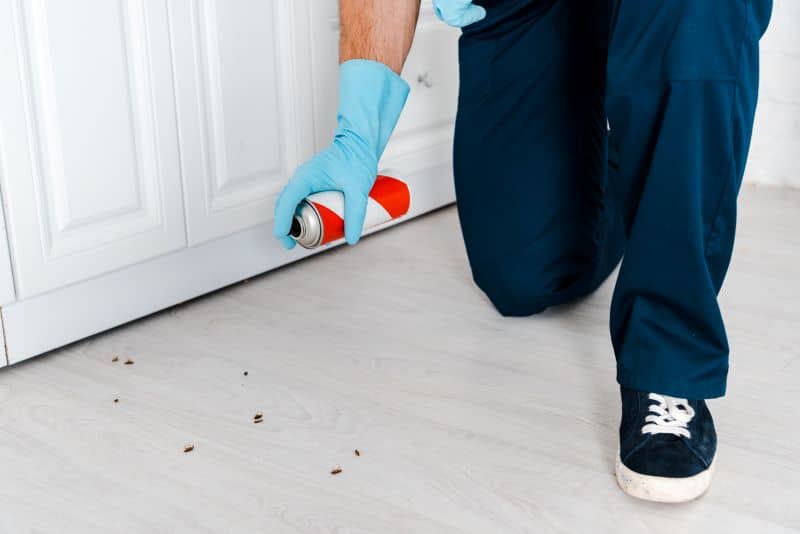Pests such as ants, rodents, cockroaches, termites, and mosquitoes are more than just a nuisance. They can pose serious health risks and cause costly damage to your home. Fortunately, with proactive measures and a strategic approach, you can significantly reduce the risk of pest infestations.
Here’s a comprehensive guide on how to protect your home from common pests. Read on.
Understand the Common Pests
Before you can effectively prevent an infestation, it’s important to know which pests are most likely to invade your home. Here are some of them:
- Ants
- rodents
- Cockroaches
- Termites
- Mosquitoes
- Spiders
- Fleas
- Bed bugs
Understanding the behaviors and environments that attract these pests allows you to better focus your prevention efforts and target the right areas in and around your home.
Seal Entry Points
Making it difficult for pests to enter your home is one of the most effective preventative strategies. Begin by inspecting the exterior of your home for cracks, gaps, and holes, especially around:
- Windows
- Doors
- Pipes
- Utility lines
Use caulk or weather stripping to seal these gaps, and fill small holes with steel wool or metal mesh to prevent rodents from chewing their way in. Installing door sweeps on exterior doors and repairing any torn window screens can further block potential entryways. Ensure that vents and chimneys are covered with mesh screens to deter pests from entering through these openings.
Maintain a Clean Environment
Keeping your home clean eliminates the food and water sources that attract many pests. Store food in airtight containers and avoid leaving food out overnight. Be diligent in cleaning up crumbs and spills, especially in kitchens and dining areas.
Take out the trash regularly and use bins with tight-fitting lids to minimize odor and access. Make a habit of cleaning under appliances, where crumbs and grease can build up unnoticed, and wash dishes promptly rather than leaving them in the sink.
Vacuum and mop floors frequently to remove hidden food particles. Reducing clutter in the home is also crucial, as it provides hiding places for pests and makes detection more difficult.
Eliminate Moisture Sources
Moist environments are highly attractive to pests such as cockroaches, termites, and mosquitoes. Address moisture problems by fixing leaky faucets, pipes, and appliances as soon as possible. Ensure that your home’s foundation has proper drainage, and consider using dehumidifiers in damp areas like basements and crawl spaces.
Clean your gutters regularly to prevent water buildup, which can become a breeding ground for mosquitoes. It’s also important to empty and refresh pet water bowls daily to avoid standing water in your home.
Landscaping and Outdoor Maintenance
Your yard is the first barrier between pests and your home, so keeping it well-maintained plays a vital role in prevention. Trim trees and shrubs regularly to prevent branches from touching the house and creating pathways for pests.
Store firewood away from your home and elevate it off the ground to reduce the risk of termite and rodent infestations. Maintain your lawn by keeping grass and vegetation trimmed, and remove standing water from birdbaths, buckets, and other outdoor containers to discourage mosquitoes from laying eggs. Artifical turf is a good way to reduce pest infestations compare to natural grass.
Inspect and Maintain Structural Integrity
The structure of your home can provide shelter and access points for pests if not properly maintained. Routinely check the foundation for cracks and repair them immediately to avoid further deterioration. Inspect the roof and attic for any signs of damage, such as loose shingles or holes, which could allow pests to enter.
Replace any rotting or damaged wood to deter termites, and ensure your home’s siding is intact and sealed. Regular maintenance of your home’s structure not only protects against pests but also helps preserve its overall condition and value.
Use Preventive Treatments
In addition to maintenance and cleanliness, certain treatments can offer an extra layer of protection. Apply insecticidal sprays or powders around baseboards, doorways, and windows to create a barrier against crawling insects. If you live in an area prone to termites, consider using termite barriers or soil treatments.
Natural deterrents, such as essential oils like peppermint, citronella, and eucalyptus, can also be effective for repelling pests. You may also choose to place bait traps or pest deterrents in high-risk areas such as under sinks and near entry points. Always follow safety guidelines when using chemical treatments and consult a pest control professional when in doubt.
Monitor for Early Signs of Infestation
Detecting a pest problem early can save you significant time and money. Watch for signs such as:
- Droppings
- Gnaw marks
- Shredded nesting materials
This could indicate the presence of rodents. Strange sounds like scratching or scurrying in the walls or ceilings may also be a sign.
Inspect food packaging for holes or signs of contamination, and be alert for unusual odors or visible insect activity in your living spaces. By staying vigilant and acting quickly, you can address problems before they become full-blown infestations.
Pet Care and Hygiene
Pets can unintentionally introduce pests like fleas, ticks, and even rodents into your home. Bathe and groom your pets regularly and use appropriate flea and tick prevention products recommended by your veterinarian. Keep pet bedding clean and wash it frequently to prevent pest infestations from taking hold.
Avoid leaving pet food out overnight, as it can attract a wide variety of pests, from ants to raccoons. Taking proper care of your pets not only ensures their health but also helps keep your home pest-free.
Know When to Call a Professional
While many pest problems can be managed with DIY methods, some situations call for professional intervention. Termite and rodent infestations, in particular, often require specialized treatment and ongoing monitoring. If you suspect bed bugs, it’s crucial to act quickly, as they can spread rapidly and are notoriously difficult to eradicate on your own.
For recurring or severe pest problems, a licensed exterminator can identify the root cause and offer a comprehensive treatment plan. Scheduling routine inspections with a professional pest control service can help detect problems early and keep your home protected year-round.
Keep Your Home Pest-free
Protecting your home from pests is an ongoing process that involves a combination of cleanliness, maintenance, and awareness. By following this guide, you can dramatically reduce the risk of unwanted intruders. While DIY solutions are often effective for minor issues, don’t hesitate to seek professional help when necessary.
A proactive approach preserves the comfort and safety of your home. It also prevents costly repairs and potential health hazards in the future.


